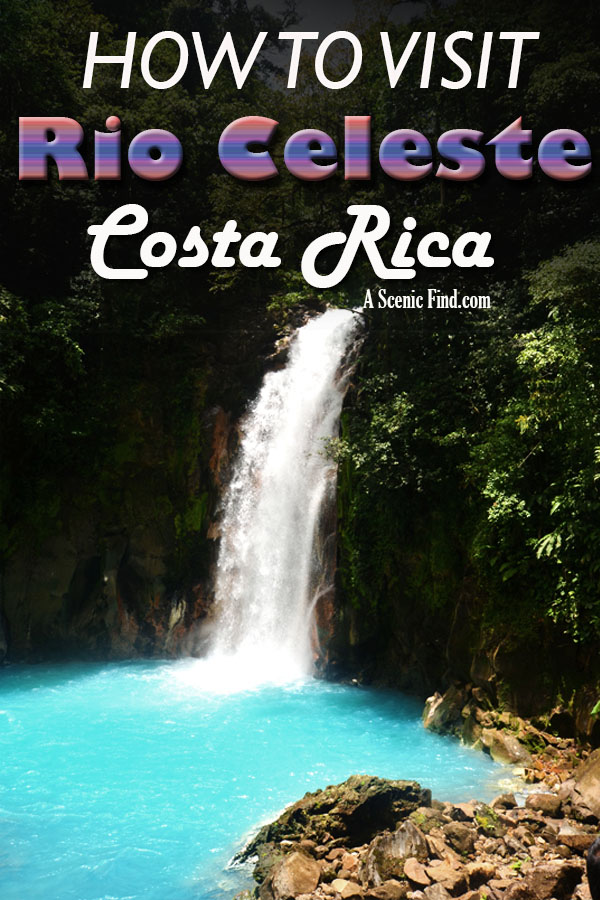Some of the links in this post are affiliate links. This means if you click on the link and purchase the item, I may receive an affiliate commission at no extra cost to you.
How To Get To Rio Celeste Costa Rica: The first time I saw pictures of Rio Celeste (Spanish)/the Celeste River (English) I was amazed. I was quite simply stunned at the vividness of the blue water, which looked too surreal to be true.
I had seen it in photos prior but wasn’t sure if the water had just been photo-shopped to look that way, as it so often is online.
So naturally I just had to check out this amazing national park and see for myself what Rio Celeste is really like, and whether the photos of this truly amazing place gave the waterfall true justice.
Read on and I’ll help explain how to get to Rio Celeste, Costa Rica.
More articles on Costa Rica:
Must Haves
I highly recommend bringing the following items on your trip to Costa Rica – a good quality memory card, an international plug adapter, and noise canceling headphones or earphones. With places as gorgeous as Rio Celeste, you definitely want a trustworthy memory card, and an international adapter is a must so you can charge your electronics in Costa Rica. Additionally, the headphones will be perfect for long bus rides.
Pin it!

How To Get To Rio Celeste, Costa Rica |
Where to Base Yourself
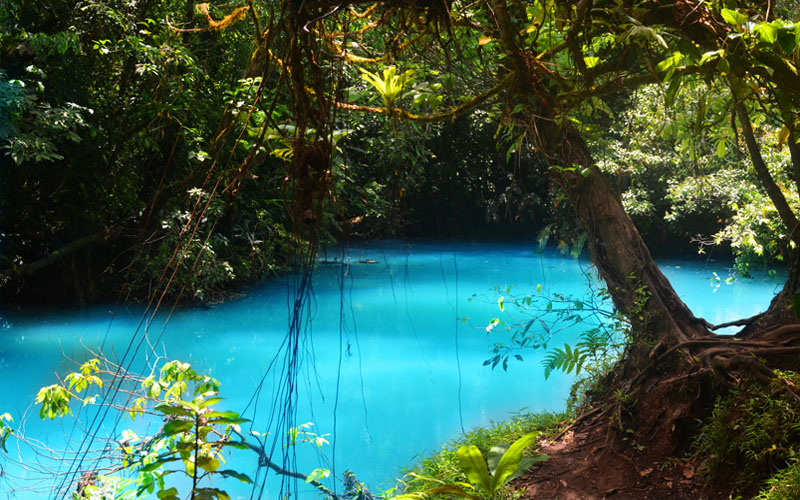
The best option for getting to Rio Celeste is to set up base in La Fortuna, which is roughly 3 – 4 hours from Monteverde and the capital San José. Rio Celeste is only a 45 – 60 minute drive from La Fortuna to the Tenorio Volcano National Park, the national park where the waterfall is situated.
La Fortuna is a larger town for Central American standards. There are quite a few hostels, supermarkets, along with plenty of Western food choices, just in case you’re starting to get a little tired of beans and rice.
A good option for budget accommodation is Gringo Petes.
Getting To Rio Celeste: Renting a Car
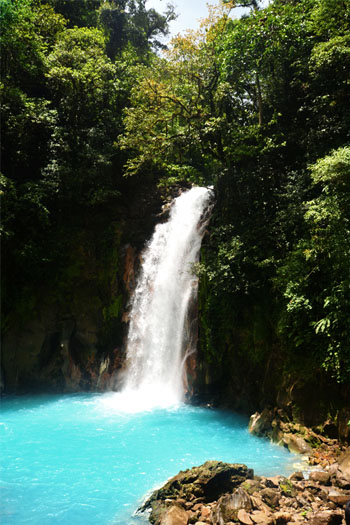
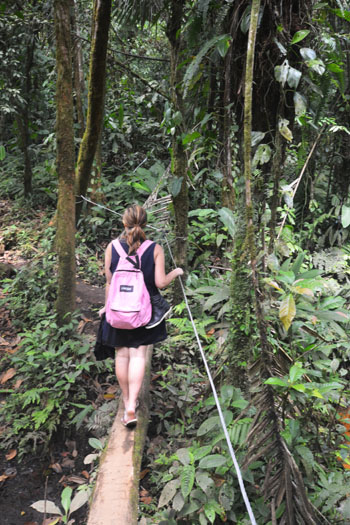
Renting a car and driving there yourself is definitely the easiest option on how to get to Rio Celeste, however it is also the most expensive. There are several roads all leading to the Tenorio Volcano National Park, with it being possible to drive there in a non SUV/4WD car.
The advantage of renting a car is that you’re not limited as much by time when visiting the site as the other options are.
Car rental places are a plenty in La Fortuna. You will need your passport, a drivers licence, and to pay a cash deposit plus rental fee.
Some places may even ask for your passport to be given as a form of deposit with the cash deposit. So don’t be alarmed.
Organized Tour to Rio Celeste
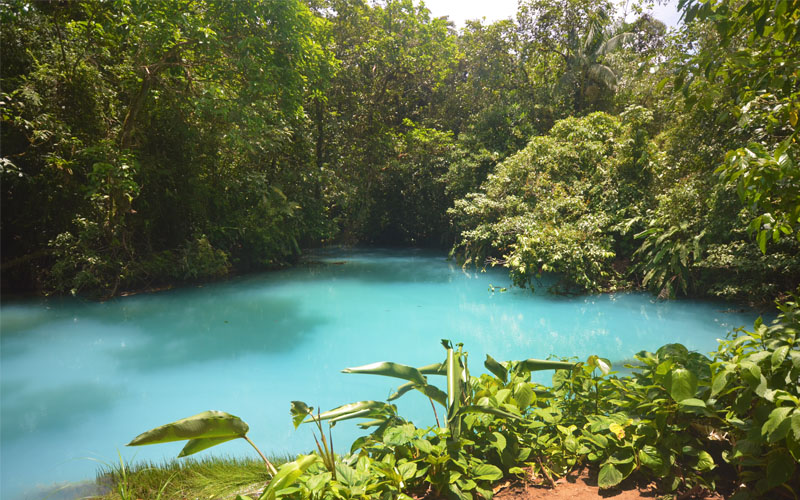
This option is a little more pricey, but it does do the job for getting to Rio Celeste. In La Fortuna there are quite a few tour operators which organize a day trip to the waterfall.
This is a full day experience, with some tours including an informative guide to help you navigate through the park, and give you a bit more information on the history of the area. This can range from $85 – 100 USD.
Catching a Shuttle Bus to Rio Celeste
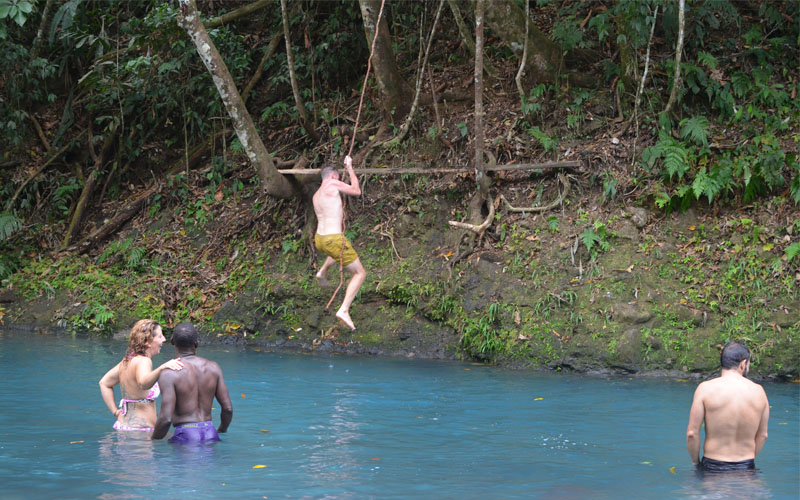
The next option removes quite a bit of stress from the local buses, since a shuttle bus will take you there directly. This is the option I used.
If you base yourself in La Fortuna the majority of hostels offer a shuttle to Rio Celeste, with the cost being anywhere from $30 – $50.
Most shuttles leave around 8 – 8:30 am, and need to leave the park by 2 pm. The travel time using the shuttle is only 45 mins to 1 hour, so you will have plenty of time to explore the park and take numerous photos of this amazing waterfall.
The added benefit of this option compared to the organized tour is that you don’t feel the compulsion to stay with the group like in an organized tour, you are free to explore at your own pace.
How To Get To Rio Celeste, Costa Rica |
Catching a Local Bus to Rio Celeste
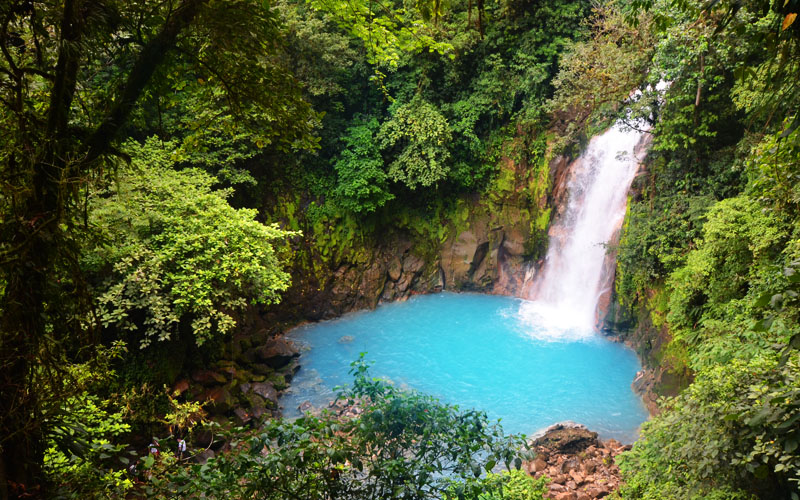
This will be cheaper, however it is perhaps the most complicated and time consuming option on how to get to Rio Celeste, as it will take an 1 hour bus ride and approximately 1 – 2 hours of walking.
You will need to catch a bus to the next town of El Tanque. From here you will need to catch a bus for Penas Blancas, with the bus leaving at 7am every morning.
This is the tricky part, which is why I would strongly recommend catching a shuttle bus, but if you’re determined to get to Rio Celeste using this method than you will need to get off between the two towns of Guatuso and Upala.
There are two entry points to Rio Celeste, one using the Guatuso entry, and the other using the Upala entry. I will be recommending the Guatuso entry.
Off of highway 6 there will be a dirt road, it will be pretty inconspicuous, but you will need to walk down it.
There are no clear signs for Rio Celeste which makes this journey a little difficult, so using google maps, and asking for directions to Rio Celeste from locals may be needed. You will know you’re on the right path when you pass the Rio Celeste lodge.
Continue along the road and you’ll eventually reach the park. The bus returning back to El Tanque from Penas Blancas leaves at 2 pm, and arrives at 7 pm from the opposite side of the road of where you were dropped off.
Tenorio Volcano National Park/Volcán Tenorio
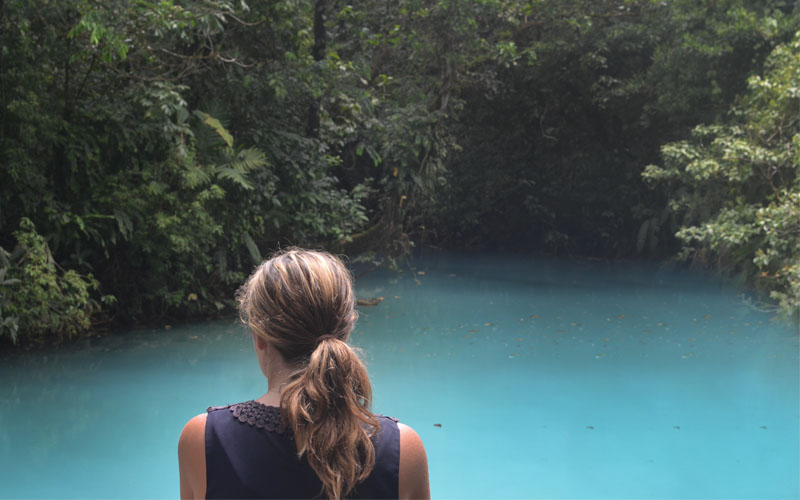
It may seem like a pain to simply get to the Tenorio Volcano National Park in the first place, and that’s because it is, but it’s well worth it. Before visiting the Tenorio National Park, I had never seen water of this colour, or anything like it before.
Back home in Australia, there isn’t much volcanic activity, if any at all. Which means sites like this are extremely uncommon.
Volcan Tenorio doesn’t only consist of the main waterfall, but there is also a large walking trail which winds around the stream and run off of the water and cuts through the rest of the park.
To reach the waterfall from the park entrance it’s at least a 15 – 20 minute walk. So there is plenty to see on the way.
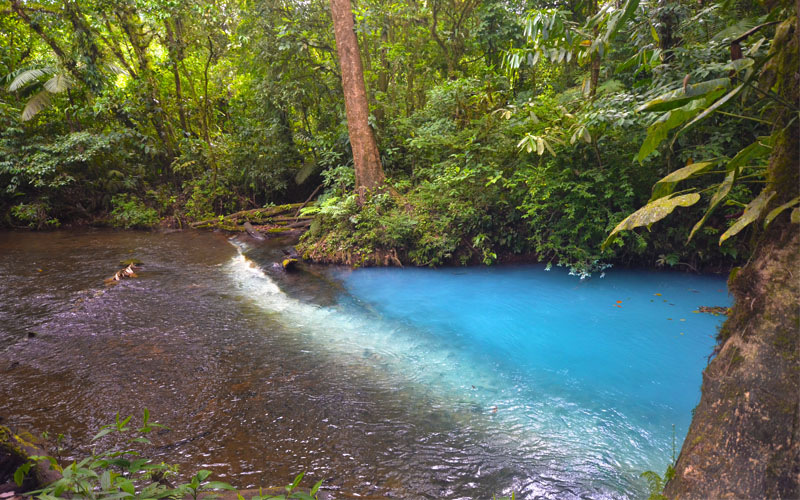
But of course the main reason why you’re there in the first place is to see the blue water and the waterfall. Just a heads up, if your after the best photo opportunities of seeing the water when it is at its blue-ist, than I’d recommended not visiting the site after it has rained.
The rain causes the mud to stir up and dilutes the blue tone of the water and makes it more of a yellow/brown colour. An added bonus if visiting the site in winter and you’re a little cold, there are hot springs scattered around the park.
The hot springs offer a refreshing opportunity to unwind and relax. So be prepared and bring a swimsuit.
Rio Celeste is well worth the trip and the hassle of getting to the park in the first place, if only for the rare photo opportunities which will be available. If in Costa Rica again I’d definitely re-visit this site.
What are your thoughts on this article ‘ How To Get To Rio Celeste, Costa Rica? ‘ Have you ever visited a site similar to this in the past? If you liked this article please share, pin, or comment!
